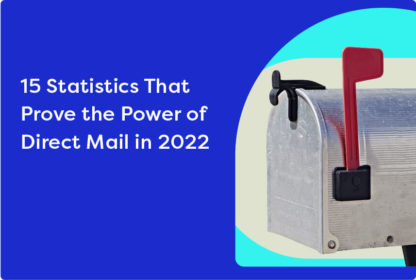Programmatic Direct Mail was front and center at the recent CommerceNext summit in New York. The conference brought together thought leaders in areas like digital marketing, retail, and ecommerce. They discussed and debated hot topics and trends around how brands can better interact with consumers.
We may be biased, but one of the highlights involved Jacob Ross, CEO of PebblePost, talking on stage with Randi Charles who serves as the VP of marketing at Ergatta.
Ergatta manufactures and sells high ticket, in-home, connected rowing machines that provide an immersive software experience. Thankfully there was no rowing on stage, as the pair needed all their energy to discuss insightful topics like reaching consumers in the home, diversifying marketing channels with Programmatic Direct Mail, and the future of marketing to hybrid work individuals.
Here are the three main takeaways from Randi and Jacob’s chat at CommerceNext NYC.
Consumers considering more at home
Jacob started the conversation by emphasizing the rising role of the home as the ideal environment for consumers to make purchasing decisions and considerations.
“Home is a super powerful environment,” Jacob said. “It’s where people are making valuable and important decisions in terms of what they’re buying, where they’re traveling, and many other things.”
Randi piggybacked on that idea by noting how over the past two years, consumers embraced the trend of in-home consideration and purchase out of necessity. There’s also been a stickiness in terms of consumers continuing to purchase from the home, which has made Programmatic Direct Mail a more critical part of Ergatta’s marketing mix.
“The home setting represents a bigger piece of the pie than ever for marketers to reach consumers,” Randi explained. “And with Programmatic Direct Mail, if you can find a moment where there’s an intersection between a decision that a consumer is making and they’re also learning and reading about that purchasing decision at home, that’s when these channels become very exciting.”
Rethinking marketing channel diversification
The second big takeaway from CommerceNext was that marketers should revisit what channel diversification means in their strategies, as well as the pros and cons of each channel.
“If you’re a marketer you’re probably hearing about channel diversification every day,” said Randi. “But how do you diversify in a smart, efficient way?
She went on to highlight that, rather than throwing huge budgets at every channel under the sun and seeing what sticks, Ergatta is having a great amount of success focusing on fewer channels that speak directly to the target consumer’s buying cycle.
“We’ve looked for channels that give us the opportunity to have moments with consumers and have been experiencing a lot of success with Programmatic Direct Mail and streaming TV,” explained Randi. “We also look for channels that afford flexibility.”
“The great thing about Programmatic Direct Mail is it provides that flexibility,” she continued. “I can test different messages, get results quickly, and try again to have that moment with consumers. So, when you find channels that check those boxes that’s where you really hit the sweet spot.”
Targeting hybrid consumers with Programmatic Direct Mail
Finally, Jacob and Randi dove deep into the shifting preferences of the new hybrid work consumer class. While some workers are returning to the physical place of work full time, many are still in hybrid work-from-home mode. And marketers need to adjust accordingly.
“Hybrid is a bit different for everyone coming back into the world,” observed Randi. “Consumers are embracing the convenience of home, though there’s obviously still the desire to get out and have social connection and interaction.”
She went on to explain that a consumer will have to hear about a brand about seven times on average before they’re ready to make a purchase. And for hybrid workers, reaching them in meaningful ways means leaning heavily on Programmatic Direct Mail.
“Programmatic Direct Mail and retargeting is a way for me to go back and nurture conversations or moments I’ve had with prospects,” says Randi. “You’re sifting through a couple pieces of mail and see this eye-catching, beautiful Ergatta rower. Consumers want to know about it and what else is going on.”
Jacob added that a well-designed and executed piece of Programmatic Direct Mail gets left on the kitchen counter or other horizontal surfaces for around 17 days.
“There’s a long-term consideration match with a long-term impact,” Jacob said. “This can be really powerful, which is why the Programmatic Direct Mail format works well with approach and targeting.”
Overall at CommerceNext, Jacob and Randi drove home that marketers have fantastic opportunities to target and nurture consumers in the home, hybrid or otherwise. And by using Programmatic Direct Mail, companies can increase their channel variety and engage people at unique in-home moments.
Want to learn more about how you can make Programmatic Direct Mail a part of your marketing mix? Check out our Acquisition and Retention solutions, or contact us directly via our Contact Us page.



